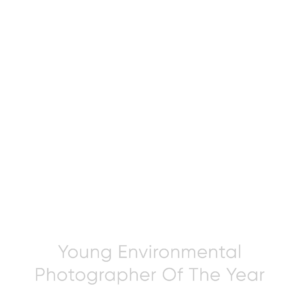We are looking for inspirational and powerful environmental photographs that encourage us to take care of our environment. While highlighting mankind’s impact on the environment, the competition also celebrates our ability to survive and innovate, offering hope that we will overcome the challenges to live sustainably.

This category is open to professional and amateur photographers of all ages, from all over the world. The winner will receive a £5,000 cash prize in addition to an interview in CIWEM’s Environment Magazine, a profile on WaterBear’s website, and a feature on Nikon Europe’s website.
All submissions are automatically entered into the competition for title of Environmental Photographer of the Year.

This category recognises rising talent and is open to photographers aged 21 years or younger. The winner will receive a Z Series Mirrorless camera and two NIKKOR Z lenses of their choosing, as well as an interview in CIWEM’s Environment Magazine and a feature on the Waterbear and Nikon platforms.
All eligible submissions are automatically entered into the competition for title of Young Environmental Photographer of the Year.
inspiring and thought-provoking interpretations of our future environment as told through a photographer’s lens
It is the year 2050. How would you tell the story of the future for our environment? What does our world look like if we get it right? How does it look if we do not?
What if, by 2050, we are living compatibly with a low-carbon world? Nature and green spaces will be integrated seamlessly in our urban environments, people will enjoy their products from sustainable local community farms, and we are all breathing the cleanest air the planet has seen since the industrial revolution.
innovative nature-based solutions and conservation initiatives that are bringing nature back from the brink
What can nature do when given a chance? What aspects of nature give you hope? Nature’s beauty and resilience is inspiring, even as it faces threats from resource exploitation and climate change. 70% of the world’s population is projected to live in urban environments by 2050. Global biodiversity is in crisis.
When nature is restored, allowed to recover, or integrated with our urban environments it can help us address the most critical issues of our time, such as threats to our water security, natural disasters, and climate change. Nature-based-solutions such as rewilding beavers in the UK or seagrass restoration in Bangladesh are restoring ecosystems and simultaneously enhancing our communities and wellbeing.
action-focused photography that highlights the urgency of curbing global warming
How are we keeping 1.5 alive? Our planet has seen temperatures rise by 1.1°C since 1850. To avoid extreme effects of climate change, we need to keep global temperature rise to no more than 1.5 degrees above pre-industrial levels.
showcasing how communities and nature are finding a way to live with the effects of our changing environment
People have always adapted their ways of life around climate patterns. Our environment impacts every aspect of our lives from where we live, what we eat, and how we work to how we interact with the world and with each other.